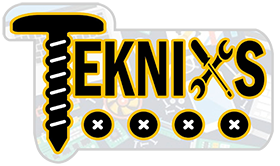Repair Teknixs
Repair techniquesrefer to the various methods and processes used to fix or restore something that is damaged, broken, or malfunctioning. These techniques can be applied to a wide range of objects and systems, including electronics, appliances, vehicles, buildings, and more. The goal of repair techniques is to identify and rectify the underlying issue, enabling the object or system to return to its intended functionality.
Here are a few common repair techniques:
Troubleshooting: This involves diagnosing the problem by systematically identifying its cause. Troubleshooting techniques often involve using testing equipment, following diagnostic procedures, and analyzing symptoms to narrow down the issue.
Replacement: When a component or part of an object is irreparable or beyond repair, the replacement technique is employed. The damaged part is removed and replaced with a new one that matches the specifications of the original.
Patching and Welding: These techniques are commonly used for repairing objects made of materials such as metal, fabric, plastic, or rubber. Patching involves applying a compatible material or patch over a damaged area to reinforce or seal it. Welding, on the other hand, involves melting or fusing together similar materials to repair cracks, breaks, or joints.
Refurbishing and Refinishing: Refurbishing techniques focus on restoring an object to its original condition or improving its functionality. This may involve cleaning, repairing, and replacing worn-out parts, as well as applying new finishes or coatings. Refinishing is often used to enhance the appearance of an object by applying new paint, varnish, or other surface treatments.
Software Updates and Reinstallations: In the case of digital systems, software-related issues can often be resolved through updates or reinstalls. This technique involves downloading and installing the latest software versions or resetting the system to its default settings.
Reassembly and Calibration: When repairing complex systems or devices, disassembly and reassembly techniques are employed. After replacing or repairing individual components, the object must be reassembled correctly to ensure proper functionality. Calibration techniques may also be necessary to align or adjust sensors, measurements, or settings to restore accurate operation.
It’s important to note that repair techniques can vary significantly depending on the nature of the object or system being repaired. In some cases, specialized tools, equipment, or expertise may be required to perform certain repairs effectively and safely.



Responses